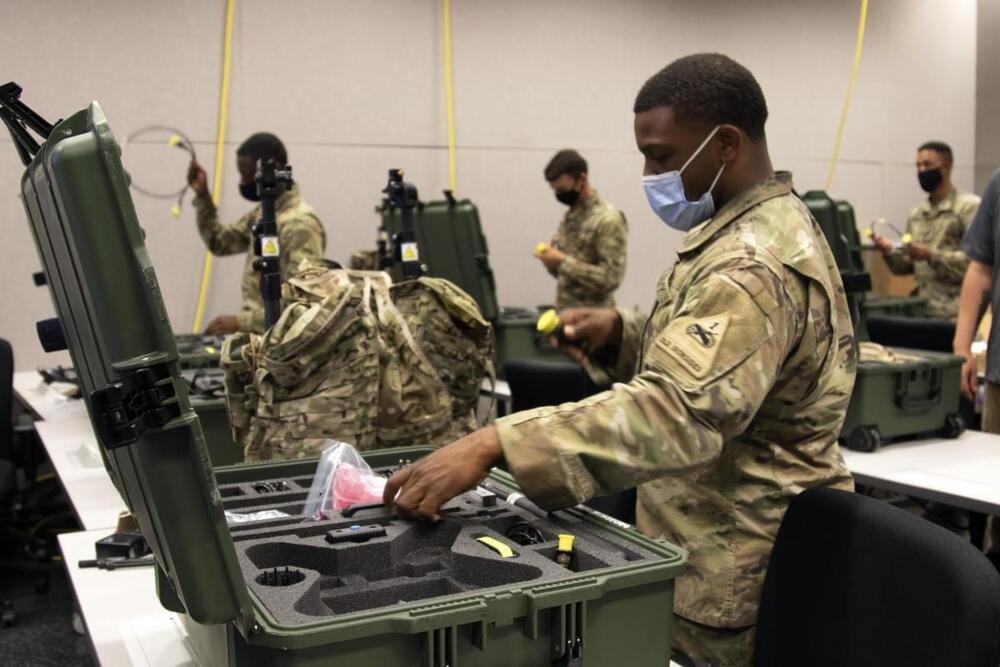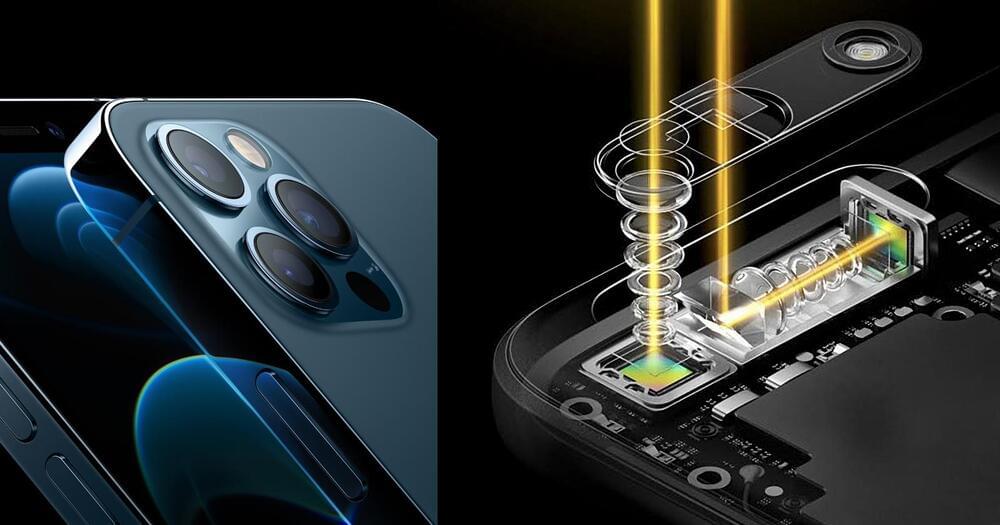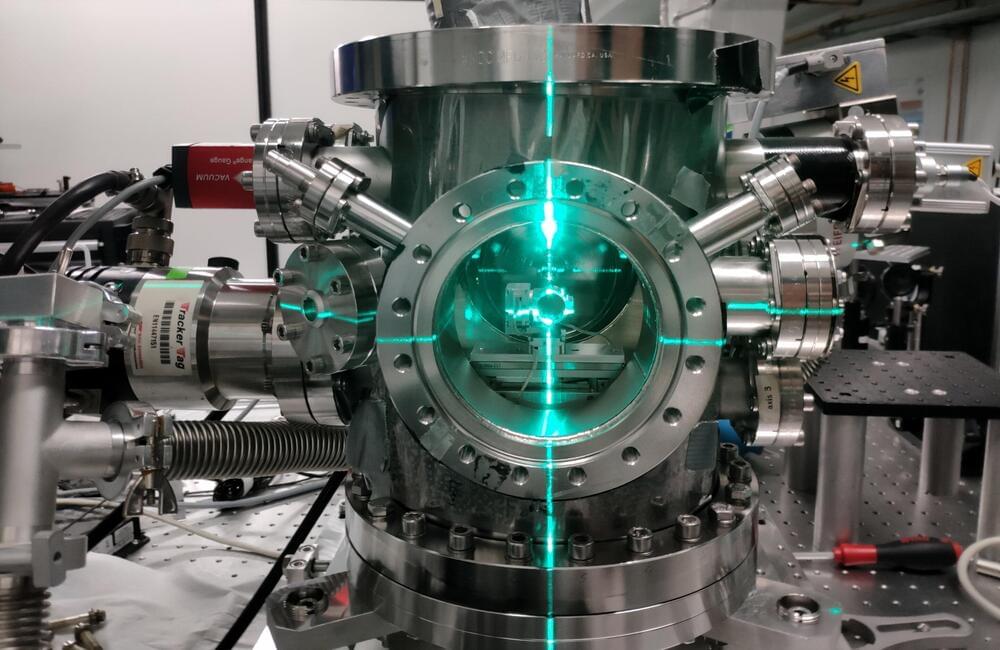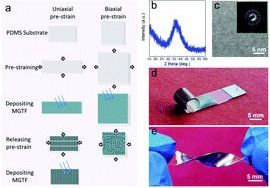“There’s nothing in the universe that looks fast to this camera.”
Category: electronics – Page 59

US Army Wants High-Altitude Jammer That Can Operate at 60,000 Feet
The US Army is seeking to develop a high-altitude warfare sensor that can fly over enemy territories, transmit data, and potentially even work as a jammer to disrupt an adversary’s communications system.
The project is called High-Altitude Extended-Range Long Endurance Intelligence Observation System, or HELEIOS.
Army capability manager for electronic warfare, Col. Daniel Holland, provided some key details about the device during a military forum on August 17 Army Times reported. HELEIOS will see a sensor attached to a solar glide device or an observation balloon, Holland explained.
Honeywell, InfiniDome develop new drone sensor to enhance GPS resiliency
Aerospace giant Honeywell is teaming up with anti-jamming expert InfiniDome to develop a new drone sensor capable of enhancing GPS resiliency when signals are weak or experiencing blockages. The new tech, which is being designed for defense and commercial users alike, is expected to hit markets during the first semester of next year.
Drones being flown for all sorts of purposes rely on GPS signals for situational referencing and carrying out tasks assigned to particular locations. The importance of maintaining those feeds, therefore, has become critical to even the most ordinary operation. That dependability of GPS connectivity, however, can be compromised by surrounding structure density – like clusters of high rises, or flights below bridges – or complicated by the ever-proliferating number of craft in the skies at any given time.

Apple Has Designed a ‘Folded’ Camera With Optical Image Stabilization
Optical image stabilization combined with a lot more zoom.
Apple has been beaten to the periscope “folded” camera punch by pretty much every other smartphone manufacturer, but it continues to design and patent new takes on the now-commonplace tech. It was granted a patent for a new design that includes folded optics and “lens shifting” capabilities.
Folded optics, or more commonly known as periscope cameras, are a design that allows smartphones to gain considerably more optical zoom than a typical lens design by placing the lens array parallel to the long edge of a smartphone body and bending the transmission of light to the sensor by using one or more prisms. The design has been used by Samsung, Huawei, and others to make smartphone cameras that sport massive optical zooming capabilities compared to what Apple offers.
This latest patent was filed in January of2019but finally granted and published on August 17 of this year, as noted by Patently Apple.

Table-top electron camera catches ultrafast dynamics of matter
Scientists at DESY have built a compact electron camera that can capture the inner, ultrafast dynamics of matter. The system shoots short bunches of electrons at a sample to take snapshots of its current inner structure. It is the first such electron diffractometer that uses Terahertz radiation for pulse compression. The developer team around DESY scientists Dongfang Zhang and Franz Kärtner from the Center for Free-Electron Laser Science CFEL validated their Terahertz-enhanced ultrafast electron diffractometer with the investigation of a silicon sample and present their work in the first issue of the journal Ultrafast Science, a new title in the Science group of scientific journals.
Electron diffraction is one way to investigate the inner structure of matter. However, it does not image the structure directly. Instead, when the electrons hit or traverse a solid sample, they are deflected in a systematic way by the electrons in the solid’s inner lattice. From the pattern of this diffraction, recorded on a detector, the internal lattice structure of the solid can be calculated. To detect dynamic changes in this inner structure, short bunches of sufficiently bright electrons have to be used. “The shorter the bunch, the faster the exposure time,” says Zhang, who is now a professor at Shanghai Jiao Tong University. “Typically, ultrafast electron diffraction (UED) uses bunch lengths, or exposure times, of some 100 femtoseconds, which is 0.1 trillionths of a second.”
Such short electron bunches can be routinely produced with high quality by state-of-the-art particle accelerators. However, these machines are often large and bulky, partly due to the radio frequency radiation used to power them, which operates in the Gigahertz band. The wavelength of the radiation sets the size for the whole device. The DESY team is now using Terahertz radiation instead with roughly a hundred times shorter wavelengths. “This basically means, the accelerator components, here a bunch compressor, can be a hundred times smaller, too,” explains Kärtner, who is also a professor and a member of the cluster of excellence “CUI: Advanced Imaging of Matter” at the University of Hamburg.
World’s first 3D-printed steel bridge revealed in Amsterdam
A new 3D-printed bridge in the Netherlands contains sensors that will help researchers study crowd behavior, and the impact tourism has on a neighborhood. Check out more trending stories on ITK: https://bit.ly/39pSMAR


Unknown Liquid Phase Discovered in Glass Is ‘A New Type of Material’, Scientists Say
Push materials to their limits, and strange things can occur – such as the discovery of a previously unknown phase of liquid, which has been reported by scientists looking at the development of super-thin, high-density glass.
These types of glass are used in a variety of ways, including in OLED displays and optical fibers, but they can have stability problems. It’s through an effort to tackle those problems that this different type of material has come to light.
Crucially, the newly discovered liquid phase promises thin glass that’s more stable and denser than the materials that have come before – a progression that could open up different ways of using the glass, and even completely new types of devices.

World’s First Flying Jet Motorcycle Just Completed Prototype Test Flight
Ever since Star Wars brought podracing and flying motorcycles to the forefront of TV, it’s fair to say most people have wanted to fly one. Luckily, we truly are entering an era of flying vehicles – after all, flying cars will be raced around a track by the end of the year – and flying motorcycles are next on that list.
Jetpack Aviation’s “The Speeder” is the answer to all our sci-fi prayers. A jet turbine-powered motorcycle that looks more like a flying jet ski, this new vehicle prototype has just completed the first test flight that will enable it to go into the next stage of production.
While it isn’t necessarily the completed vehicle that took flight, the company was testing its VTOL self-stabilizing jet platform that will make the basis for their Speeder vehicle. The tests showed it could hover, turn, move in various directions, and right itself after being knocked – all incredibly difficult feats when working with four jet engines.

Development of stretchable metallic glass electrodes†
Stretchable electrodes are essential components for wearable electronics. However, the stretchability of the electrodes is often achieved with the sacrifice of electronic conductivity along with huge variation in resistance. In this work, stretchable metallic glass electrodes (MG-electrodes) that have both h.